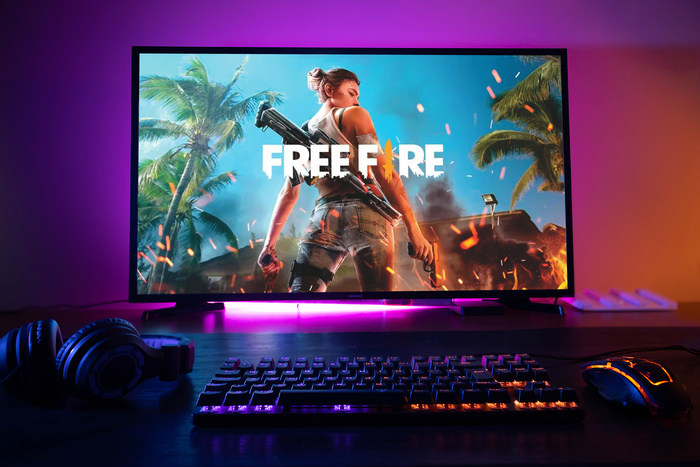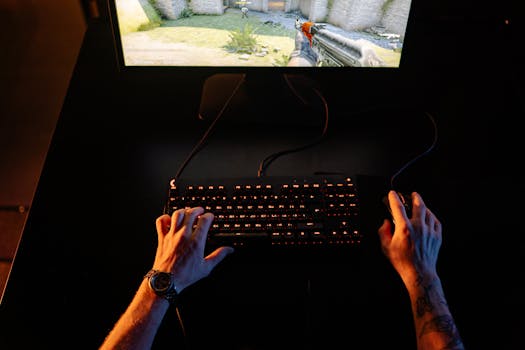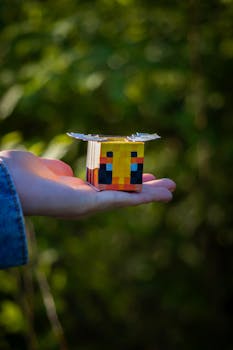Tips
Battle Game Strategies: Practical Tips to Stand Out in Battles
Learn effective battle game strategies: improve decision-making, adapt tactics, train purposefully, and conduct post-game analysis to truly evolve. Discover how to excel in any digital confrontation now!
Advertisement
If you've ever felt that butterflies in your stomach before a decisive match, you understand how winning can seem nearly impossible. Battle game strategies aren't just for professional players; anyone can apply effective tactics. Finding clever shortcuts is as important as honing your reflexes.
Virtual battles unite players determined to achieve victory, whether in teams or head-to-head. Those who learn to adapt their approach to different opponents can control the pace of the game and avoid surprises.
Let's dive into truly effective battle game strategies. Get ready to apply techniques validated by experienced players, with practical examples, action checklists, and comparisons that will accelerate your progress.
Improving game reading with quick microdecisions
Anyone who wants to excel in digital conflict quickly learns that recognizing patterns in the game transforms decision-making. The best players do this in seconds, almost on autopilot, and constantly practice this skill.
Perceiving small changes in an opponent's behavior allows you to anticipate attacks and know the best time to advance. To achieve this level of understanding, you need to develop microdecisions: small choices made in sequence that generate a cumulative advantage.
Identify weaknesses in the opponent's positioning
Observing details in movement is essential to exploiting vulnerabilities. Have you noticed that an opponent always retreats to the same corner? Next time, act according to this pattern. Execute the action quickly, surprising with an unexpected move.
Evaluate the use of special abilities. Did someone waste an important resource? The time to press the issue is right after this waste. This micro-decision often results in eliminations or objective achievements.
Communicate the discovery to the team, saying something like, "Player X repeats strategy Y, let's surround the opposite side." Small hints speed up group reactions and maximize the advantage.
Decide to retreat before losing valuable resources
Many take too many risks and lose everything in an impulsive attack. Correctly assessing when to retreat saves your position and preserves essential resources for the next fight.
In the heat of battle, notice signs like declining health or poorly timed abilities. Tell yourself, "Right now, I'm leaving now and coming back stronger in the next wave."
This attitude demonstrates tactical intelligence. By retreating when necessary, you make life difficult for your opponent and maintain your own pace of progress within the game.
| Decision/Observation | Clear Signal | Recommended Action | Benefit |
|---|---|---|---|
| Repetitive movement of the opponent | Return to the same place | Anticipate and surround | Surprise and eliminate faster |
| Skill spent | No special appeal | Attack immediately | High chance of victory in duel |
| Opposing team retreated | All far from the goal | Advance through the map | Press map and gain space |
| Weakened ally | Low life | Protect to avoid low | Conserves group resources |
| High risk level | Many enemies nearby | Retreat immediately | Avoid unnecessary losses |
Adapting tactics according to team or solo styles
Each game mode requires adjustments to the basic strategy. Team play requires constant dialogue and coordinated actions, while solo matches reward more independent decision-making. Experiment with variations to see which one suits you best.
Try to understand your opponent's preferred approach. Aggressive players, for example, can be neutralized with smart defensive positioning. This reduces the chances of being caught out during quick attacks.
Objective advantages of adapting posture according to the match
Adapting battle game strategies to the dynamics avoids common pitfalls. Playing as a team, coordinate most actions via quick chat: summon allies with short phrases like "Defend tower now!"
Once on the ground, take the opportunity to test bold approaches without harming others. Use shortcuts on the map itself to surprise those who only recognize predictable movements.
- Opt for simple combos in the first few minutes, control resources early on, and don't take excessive risks.
- Change your route when you notice your opponent has memorized your pattern; this breaks expectations and forces improvised reactions.
- If you are eliminated, review the replay and note three clear errors, changing your approach in the next match.
- Communicate every different maneuver using icons or visual shortcuts in the game, speeding up team understanding.
- Apply battle game strategies that take advantage of the element of surprise, creating unexpected opportunities in combat.
These simple adjustments make your game more unpredictable. Use each round as practice to invent new approaches.
List of microfixes to adjust in real time
Watch for alert opponents: they check the minimap every few seconds, control the team's pace, and know where each threat might emerge. Do the same!
- Review your artillery during breaks, managing resources to always be prepared in critical situations.
- Get close in decisive fights, but keep your distance if you're the primary shooter, preserving your health while dealing damage.
- Prioritize map objectives, as taking down towers is more advantageous than aimless individual duels.
- Avoid unnecessary confrontations when the score already indicates superiority; maintain your advantage by forcing your opponent to make mistakes.
- Try changing your usual attack and defense times, making it harder for the other team to read you.
Over time, applying these micro-corrections will become so automatic that you won’t even notice—but your opponents will feel the impact of each adjustment.
Boosting your tactical evolution with post-game analysis
Those who truly want to progress focus on what happens after each match. Analyzing successes and failures is a sound investment, as it reduces repeat errors and increases natural success in subsequent rounds.
The key is not just to watch replays, but to pause at crucial points and compare: "Could I have taken a different path here?" This kind of questioning transforms performance.
Record repeating patterns to correct recurring failures
After three matches, make note of the moves and situations that led to defeats. Repetition often highlights a specific weakness. Correct the points you recorded in the next match and monitor the results.
Apply patterns from high-level players. Watch videos, identify small decisions, and repeat them in training, focusing on subtle details like vision control or skill economy.
This creates a process of constant improvement, with each analysis yielding a tangible point of growth — whether in defense, attack, or map rotation tactics.
Practical example: internal dialogue after a decisive play
The scene: You missed an important objective by hesitating when starting the attack. Stop and reflect on that moment: "My hesitation cost me the map, next time I'll start with shortcut X."
Battle game strategies are built on these honest and direct reviews. Remembering small details creates a decision roadmap to consult at critical moments.
Every self-talk after a mistake builds trust, as long as it generates an adjustment applicable in the next round.
Creating specific and motivating workout routines
Training outside of matches is the key to success for those who want to climb the ladder. Warm-up routines, timed challenges, and simulations of critical situations quickly hone skills.
Track your time to complete microtasks, such as accuracy over three rounds or executing specific combinations. Turn each workout into a mini-goal, making the process light and rewarding.
Dividing the workout into focused blocks
Set aside time for each aspect: reflexes, tactics, and communication. Practice combos with a specific goal, such as reducing execution time by 10 seconds in a week.
Gather friends or find partners online for simulated training sessions with realistic situations. Each round provides an opportunity to experience different scenarios.
After each workout, record what worked. Repeat only the practices that brought results, optimizing your athlete's development cycle.
Real incentives to maintain motivation
Celebrate small victories: reach your accuracy goal, post it in your friends' groups, or write it down in a spreadsheet. This way, your progress gets immediate recognition.
Promise small rewards: Successfully unlocked a new strategy? Give a break or a simple treat. This associates effort with the pleasure of playing.
Include breaks to review results and plan the next step, avoiding training overload and keeping your mind fresh for new challenges.
Conclusion: Building a mindset of constant evolution
Mastering battle game strategies requires genuine dedication to daily improvement. Small adjustments add up to lasting positive effects. The practical steps discussed here have already begun to transform your performance.
With each round, new opportunities arise to test, adapt, and correct, solidifying both individual and team growth. Be actively involved and embrace each mistake as a foundation for future success.
Invest in analysis, continuous adjustment, and fun, always renewing your interest in learning. Use this cycle to fuel your tactical prowess and renew your motivation for increasingly solid victories.
Trending Topics

Travel for Free with Air Miles: See how to save!
Unlock the power of airline miles and enjoy free travel to your dream destinations! Learn how to earn and use miles.
Keep ReadingYou may also like

Budget Vacation Rentals: How to Save More and Make the Most of Your Stay
With affordable seasonal rentals, you can guarantee more space and comfort without compromising your budget. Check out our tips!
Keep Reading


